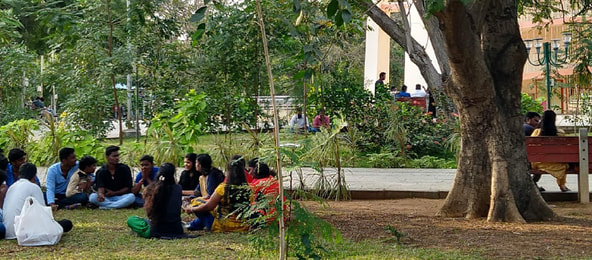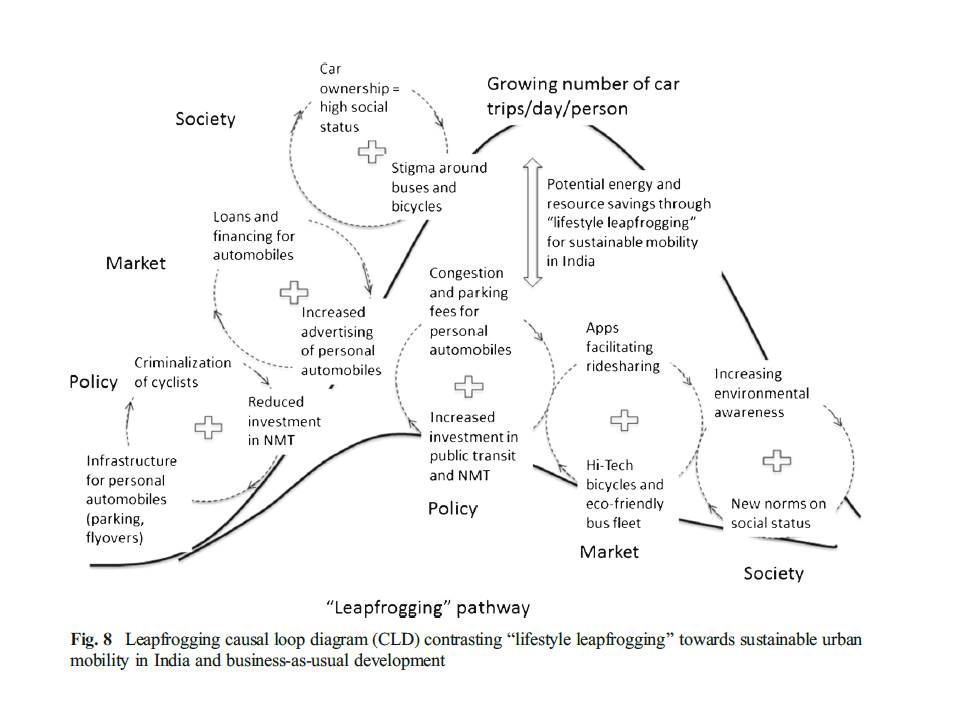Sustainable consumption and well-being in cities
|
A major preoccupation of my work is exploring how urban residents in southern cities can live good lives without emulating the resource-intensive consumption patterns of the global North. This is an important question to explore as the emergence of millions of "new consumers" in countries like Brazil, India, China and South Africa is driving up consumption-based emissions in these countries. Unequal development has meant that these new consumers emit greenhouse gases in greater amounts and faster rates than the rural and urban poor in these countries. Tackling consumption and the role of affluence in driving climate change is a climate and environmental justice priority.
In 2021, I wrapped up a large collaborative project exploring the role of green public spaces in provisioning sustainable well-being. With colleagues at the University of Geneva, University of Basel, Shanghai University, NUS Singapore and Ateneo de Manila University funded by the Swiss Network for International Studies, this project explored how green public spaces contribute to human well-being and sustainability in four mega-coastal cities in South and South East Asia. At a time when notions of the public are narrowing and as cities come under pressure to privatize infrastructures and reshape existing spaces to accommodate elite lifestyles, an exploration of how green public spaces are practiced in cities today revealed how different groups of people satisfy diverse needs, such being part of a community or having contact with the natural environment, among others. As the Covid-19 pandemic sweeps across the world, restricting access to green public spaces for many millions of people, an approach that recognizes the value of such spaces towards ‘sustainable well-being’ is all the more relevant, particularly towards meeting the needs of marginalized social groups who are ill-served by market logics. Prior to this, I wrote a journal article with Patrick Schroeder of Chatham House where we develop the concept of "lifestyle leapfrogging." We use Causal Loop Diagrams, a systems-thinking tool, to explore how market, policy and behavioral interventions can be combined to help urban consumers in India and China shift to more sustainable consumption practices from the out-set. Our argument is that by pursuing policies that prioritize meeting needs through investment in non-motorized and public transport, and energy-efficient public housing, cities in India and China can side-step developing resource-intensive urban infrastructures like freeways. This paper highlights the importance of systems thinking and planning in sustainability, especially when combined with a focus on embedded power relations. |
Key Publications
Copies of these journal articles can be found in my Academia and Researchgate profiles Anantharaman, Manisha., Marlyne Sahakain, & Czarina Saloma. (2023). Spatialising degrowth in Southern cities: Everyday park-making for (un)commoning. Urban Studies. Online First. Di Giulio, Antonietta, Marlyne Sahakian, Manisha Anantharaman, Czarina Saloma, Rupali Khanna, Srikanth Narasimalu, and Dunfu Zhang. (2022) . How the consumption of green public spaces contributes to quality of life: evidence from four Asian cities. Consumption and Society 1(2), 375-397. Sahakian, Marlyne., and Manisha Anantharanab. (2020). What space for public parks in sustainable consumption corridors? Conceptual reflections on need satisfaction through social practices. Sustainability: Science, Practice, and Policy, 16(1). Sahakian, Marlyne, Manisha Anantharaman, Antonietta Di Giulio, Czarina Saloma, Dunfu Zhang, Rupali Khanna, Srikanth Narasimalu, Abigail Favis, Cherie Alfiler, Sumana Narayanan, Xin Gao, and Chenxin Li. 2020. “Green Public Spaces in the Cities of South and Southeast Asia”. The Journal of Public Space 5 (2), 89-110. Schroeder, P. and Anantharaman, M. (2017) Lifestyle leapfrogging in emerging economies: Enabling systemic shifts to sustainable consumption. Journal of Consumer Policy 40(1), 3-23. Media coverage Why open spaces need to be created now more than ever, The Hindu, March 2021 Public parks guarantee sustainable well-being, Science Daily, March 2020 |


